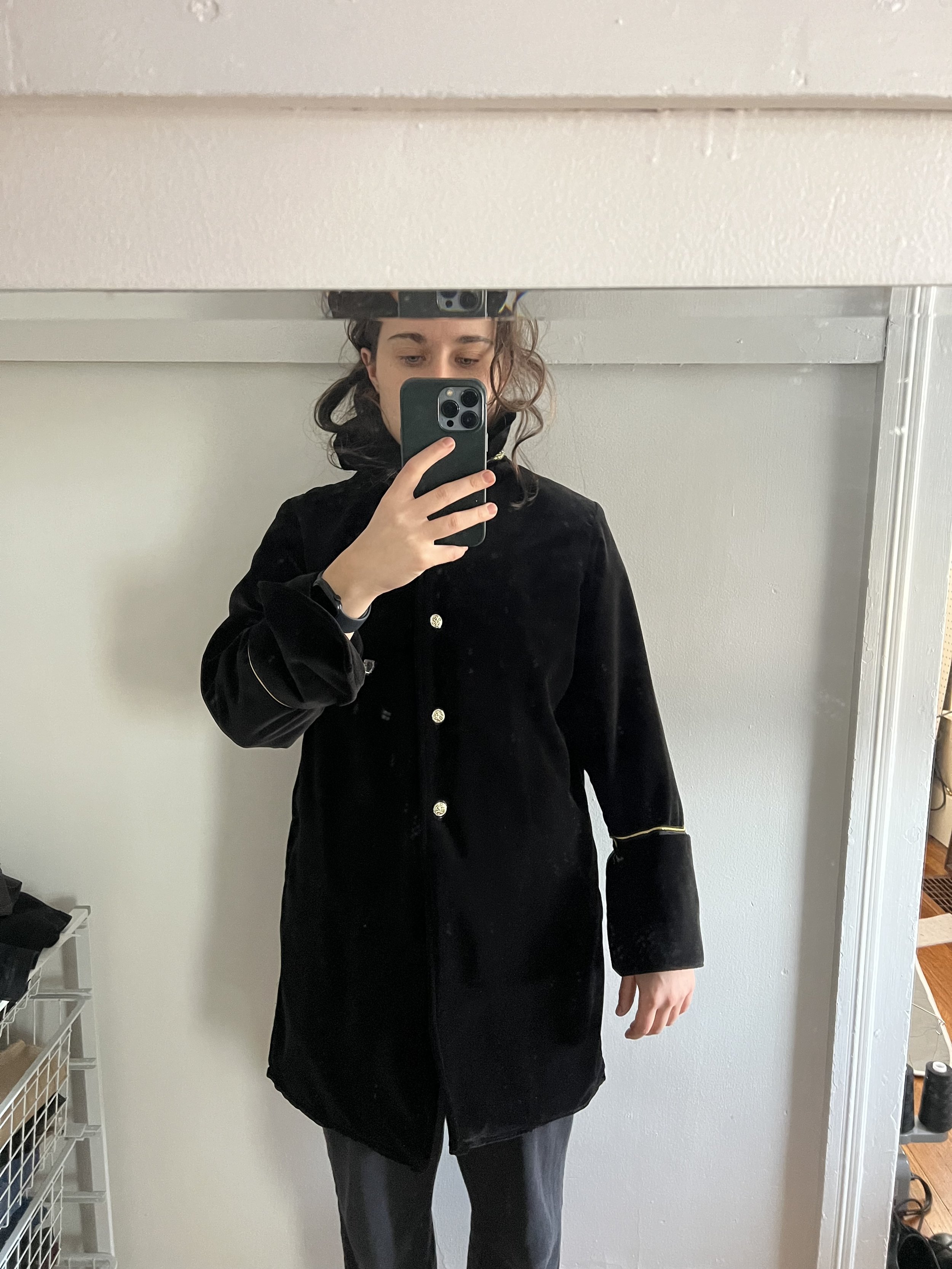16th Century Androgyny
After seeing Six the Musical, I found myself thinking about reformative history—how narratives are reshaped to include voices that were once lost or erased. As a queer person, my mind immediately turned to the many LGBTQ+ figures throughout history who were hidden, silenced, or never given the chance to tell their stories. What if they could?
Inspired by this idea, I began researching historical fashion through the FIT archives, exploring the styles of the 16th century. I was particularly drawn to the contrast between men’s and women’s silhouettes of the time and wanted to experiment with blending them. What would it look like to design a coat that embodies both? A garment that challenges rigid gender norms and reflects an androgynous aesthetic?
One historical element that stood out to me was the French hood—a headpiece worn by noblewomen during the 16th century, often associated with Anne Boleyn and the Tudor court. I noticed its presence in numerous historical portraits and became fascinated by its structure and symbolism. Using the 3D fashion software CLO, I reimagined the French hood as a futuristic accessory, merging its iconic shape with modern materials and design techniques. This process, like my coat design, is a way of pulling from the past to inform the future—redefining historical garments through a contemporary, androgynous lens.
This exploration led me to reimagine historical fashion through a queer lens—melding structure and fluidity to create something beyond the binary. In doing so, I hope to not only honor the past but also reclaim space for the voices and identities that history overlooked.













